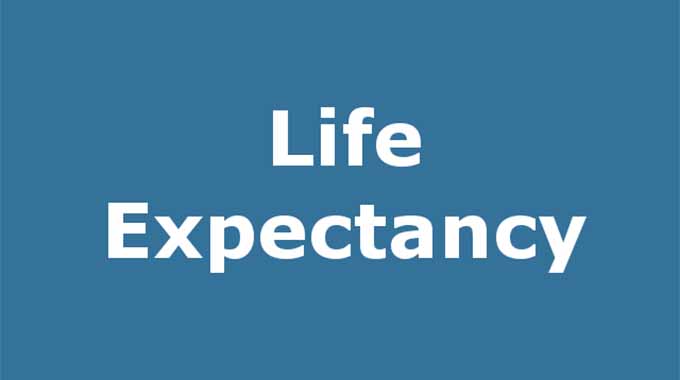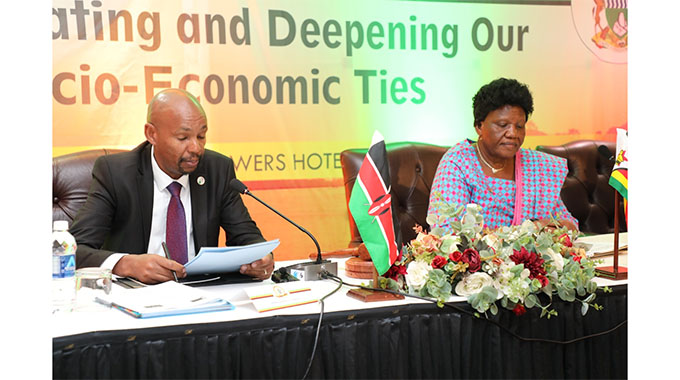Editorial Comment: Mortality statistics show us new social, community needs

The rapid improvement over two decades in life expectancy at birth to 65 years demonstrates that Zimbabwe and Zimbabweans can tackle the most ruthless medical emergencies as well as continuing to upgrade medical care for the overwhelming majority.
In 1982 life expectancy was estimated to be 57; at that stage the census did not delve into mortality rates but the estimate was considered founded on reasonable data and assumptions. Life expectancy then continued rising during the 1980s, as the primary health system was entrenched and the major infant vaccination drive and other interventions started slashing mortality among under 5s.
Life expectancy is a useful measure of how good a health service and how much people care about their health, but until the averages are broken down, as the results of the last census are seeing, information can be misleading or critical factors can be ignored.
For example, a significant improvement in the survivability of small children under five will produce an increase in average life expectancy at birth, even when the life expectancy of five year olds does not shift. There are simply more five year olds.
This is why the details matter. They show us where we have made advances, and show us where we need to concentrate our efforts on new programmes, new interventions.
Two decades ago average life expectancy at birth in Zimbabwe had fallen from the 57 in 1982 to 45. This was directly due to HIV. That pandemic was largely killing people in their 20s, 30s and 40s, to the extent that soon after the new Granville Cemetery opened in Harare, out of the first 1000 burials more than 950 were young people aged between 25 and 45.
With the continual improvements in other health services, the life expectancy of those who missed HIV infection might have been rising, but the more than 100 000 people a year dying of Aids each year in the first years of this century were depressing the average.
The latest breakdowns revealed in the census are important. While the Ministry of Health and Child Care tries to get the best figures available, often available statistics are not consolidated for many reasons, including the fact that not much more than 40 percent of deaths are registered for a death certificate, the rest just having a burial order.
Now we can see where we have to continue pushing. There is the rural-urban divide, not nearly as bad as it once was but it is fairly obvious why so many rural communities are wanting devolution funds spent on a significantly denser network of clinics, with maternity care.
They might not have the statistics but they certainly live with the fact that regardless of how good Zimbabwe is when we look at the ratio of clinics to people, the fact remains that a lot of people have to travel some distance to a clinic when they are sick, or when they are giving birth. Urban people might see overcrowding and other problems, but at least they are all relatively very close to medical care and can, at a push, hire a taxi very easily.
We built a good network in the 1980s of primary health care facilities, now we need to make that network denser so just about everyone lives fairly close to a clinic. If that needs more smaller clinics rather than fewer larger ones then we need to plan accordingly.
Other areas require us to maintain what we have won. Infant mortality rates are low now, but we need to keep them low by not relaxing our child vaccinations and the other simple measures taken to ensure overwhelming survival of small children. Sometimes communities and families can relax when battles have been won, but the latest measles epidemic, now being contained and beaten in a special effort, shows that any relaxation can be dangerous.
HIV is another example. The death rates from Aids-related illnesses have sunk below 20 000 a year, and we have more than 90 percent of people knowing their status through testing, more than 90 percent of those living with HIV being on effective treatment and more than 90 percent of those having a zero viral load. That still leaves a lot, who we must find and treat.
But while we need to get the last of the people living with HIV into the system, the sheer scale of the victory over that pandemic must also give us confidence and hope. We beat it back by mobilising a country and mobilising communities and families. We may need more effort for final victory, but the very fact that we added an extra 20 years to our average life expectancies shows the dramatic scale of what we achieved.
The battle against Covid-19, another major health victory, was also won by a combination of mass mobilisation, solid acceptance of high-class professional expert advice, political will and again that crucial mass mobilisation of an entire population, of communities and families. So we know how to win other health battles.
The health professionals, having beaten so many epidemics through vaccination and treatment, are now shifting stress for new programmes onto the non-communicable diseases, things like hypertension, heart problems, diabetes, cancers and the like. These are most likely what kill most of the middle-aged and elderly, although younger people can die of them as well.
The figures generated by the census will help. One very good question, or set of questions, in the census dealt with close relatives who had died in the last 12 months, and what they died of. This gives us a photography if you think of it that way of what kills in the course of year, and the ages or those who die. Few relatives are experts, but they were told by the professionals what killed their parent or their child, and that is what the enumerators were recording.
The other factor in census statistics, and the mortality rates need to be read with the statistics on education, standards of living and the like, is not just to look at life expectancy but also to look at the quality of that longer life. Having a few more years may not be that wonderful if those years are spent in abject poverty.
Ever increasing life expectancy means we need to address the growing numbers of older people, ensuring they can continue being productive longer, as well as having a better safety net. And the quality of life in this group is also dependent on things like that denser clinic network. It gets harder to walk 20km when you are 70.
The growth of the census every 10m years from just counting heads, recording ages and figuring out male-female ratios to a large data bank of very useful and critical data justifies the expense, time and drawing up of a wide range of statistics and relationships. We discover things we never imagined, and we can now see problems that lie ahead,










Comments